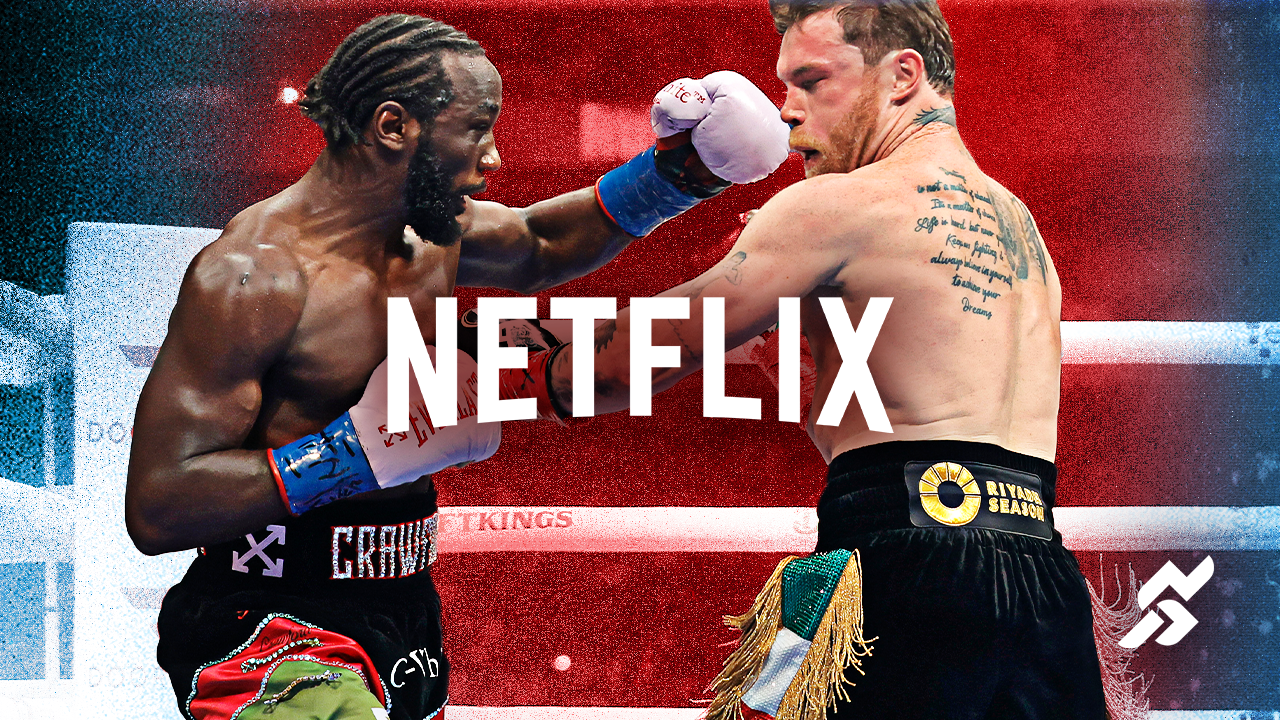
Netflix announced that its stream of the Canelo vs. Crawford event this past Saturday was seen by 41.1 million viewers around the globe over the course of the weekend, a figure that’s sure to invite more scrutiny over measurement of major sports events on streaming services.
The main event itself, Terence Crawford’s unanimous decision win over Saul “Canelo” Alvarez, was seen by 36.6 million viewers. The Canelo/Crawford fight, the tenth of the evening, didn’t start until 1 a.m. ET and ended at nearly 2 a.m. ET.
As expected, the tally comes up short of Netflix’s record set last November when 60 million households reportedly streamed the Jake Paul/Mike Tyson card. That event gained infamy for numerous technical glitches and a main event called rigged by many fans, including some sports and Hollywood heavyweights.
Netflix also claimed that the Paul/Tyson undercard, the second fight of the Katie Taylor-Amanda Serrano trilogy, was seen by nearly 50 million. The streamer hosted the third and final bout between the women this past July, which was seen by 6 million viewers around the world.
The measurement for streaming viewership has come under fire in recent weeks, notably against Nielsen, which provides the third-party ratings currency that undergirds the $5 billion-plus TV advertising market. Nielsen recently began to roll out its Big Data + Panel currency that sources data from over 75 million devices in addition to its traditional panel of 42,000 homes and over 100,000 consumers.
Last Monday, YouTube re-issued its viewership totals for its live stream of the Los Angeles Chargers’ win over the Kansas City Chiefs on Sept. 5. The initial report said YouTube claimed 16.2 million viewers for the free broadcast, yet on Friday, the company and Nielsen revised the total upwards to 19.7 million.
Both firms cited an internal technical issue that did not count a segment of YouTube views as legitimate, but the revision—which added 3.5 million viewers—was criticized by research leaders for ESPN and Fox, two of the NFL’s legacy media partners, for an apparently lack of transparency into the methodology.
In January, Netflix opted out of Nielsen to sign with one of the company’s chief rivals, VideoAmp, to provide measurement of its programming, which includes the streamer’s lone weekly live program, WWE’s Monday Night Raw.
The Canelo/Crawford viewership tally include 500,000 viewers who may have watched the fight card in around 2,700 bars, restaurants, casinos and other hospitality establishments. In the U.S., Canada and Puerto Rico, the card was licensed exclusively for commercial distribution to Joe Hand Promotions, which has traditionally provided pay-per-view events in the combat sports world. According to Joe Hand, Canelo/Crawford was the third highest grossing commercially licensed event in boxing history behind Floyd Mayweather Jr. vs. Manny Pacquiao in 2015 and Mayweather vs. Conor McGregor in 2016.
Saturday’s fight card was the first to be promoted by Zuffa Boxing, the new promotion co-founded by UFC president Dana White, Sela (an entertainment subsidiary of Saudi Arabia’s Public Investment Fund) and Turki Alalshikh, the chair of the kingdom’s entertainment authority.
Alvarez signed a four-fight, $400 million deal with Riyadh Season, the entertainment promoter managed by Alalshikh. During the Friday press conference, Alalshikh said that the Mexican superstar would make more than $100 million for the bout, giving Alvarez nearly $800 million in career earnings from fights and sponsorships.
In comparison, during his May 28 appearance on Ring Champs with Ak & Barak, Crawford said that he was taking home $10 million for the Alvarez fight, a relative pittance. “I’m doing it for the opportunity, baby, the legacy,” he said on the podcast, with the hosts in disbelief. “The legacy outweighs the money.”
